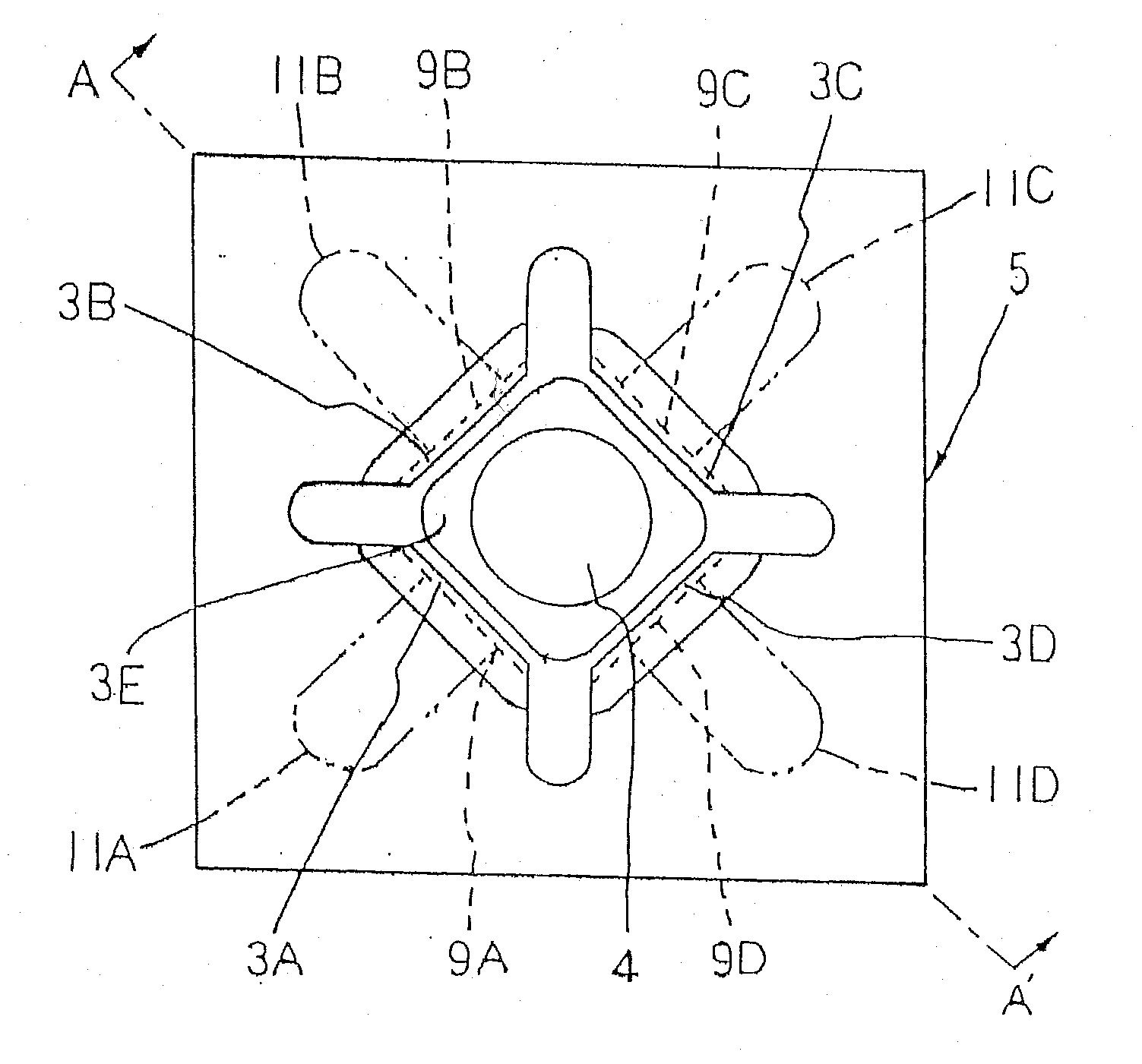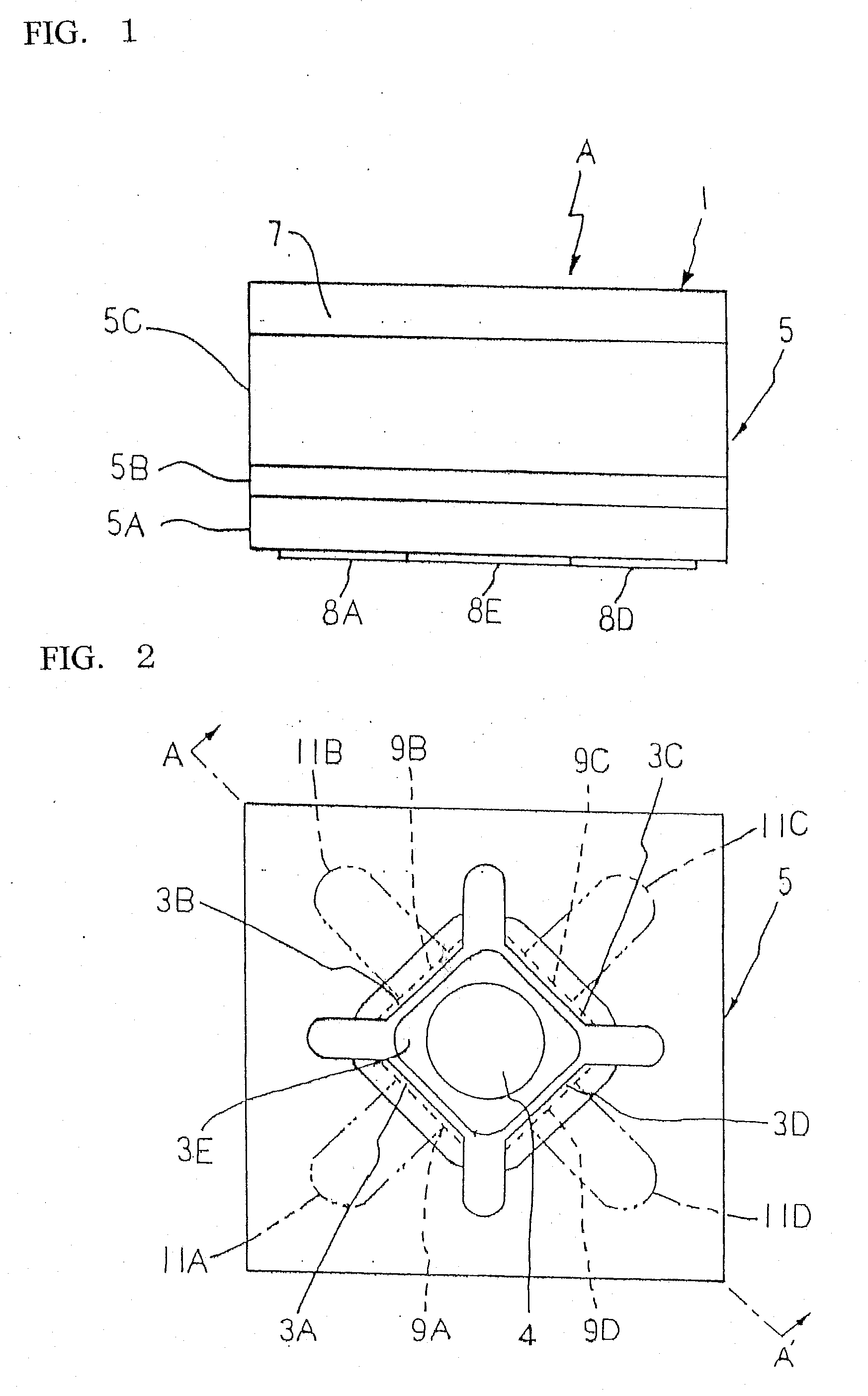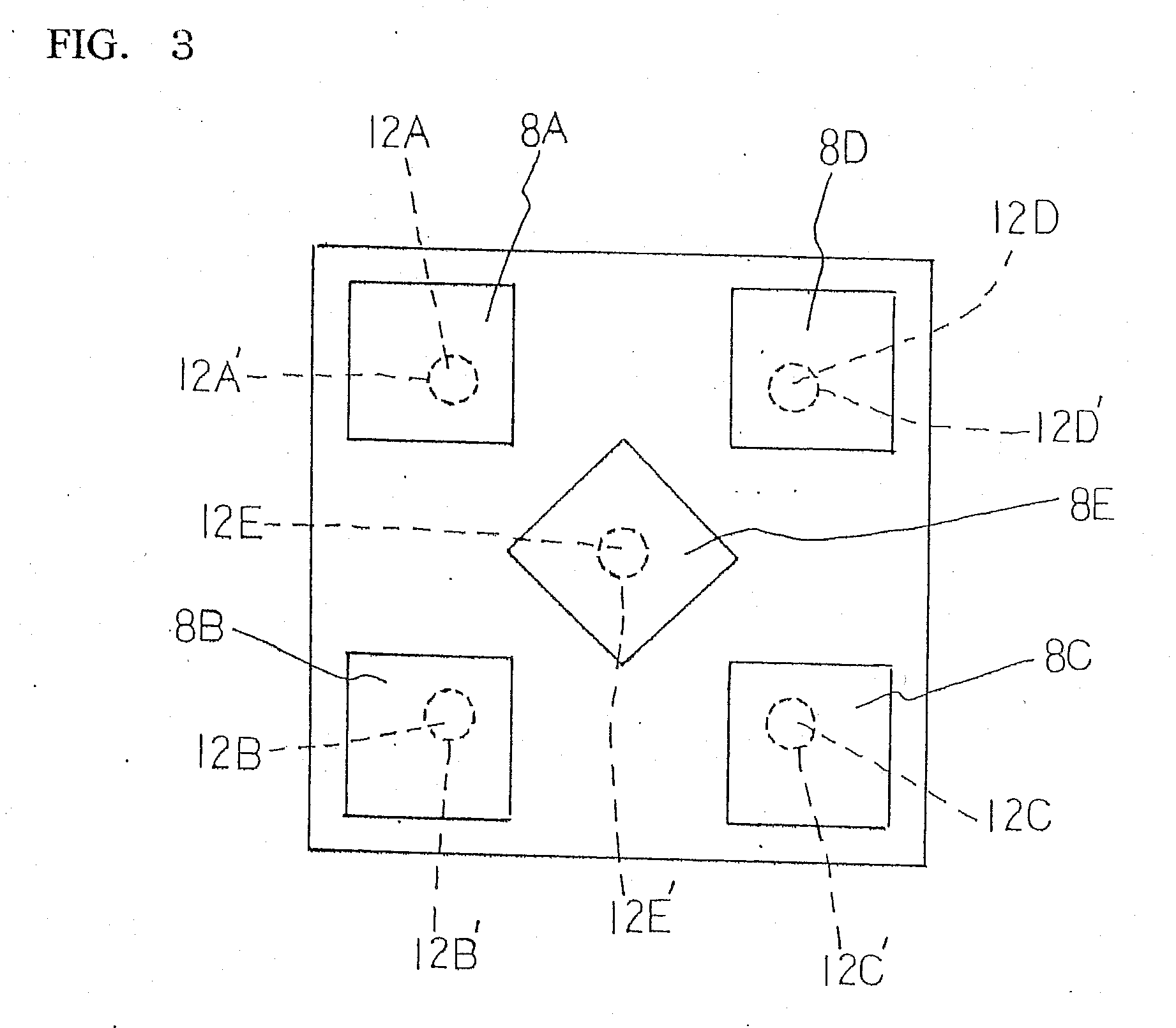Compact tilt and vibration sensor and method for manufacturing the same
a technology of tilt and vibration and sensor, which is applied in the direction of acceleration measurement using interia forces, instruments, material analysis, etc., can solve the problems of sensor useful life reduction sensor motion sensitivity degrade, etc., and achieve high motion sensitivity, high durability, and high performance
- Summary
- Abstract
- Description
- Claims
- Application Information
AI Technical Summary
Benefits of technology
Problems solved by technology
Method used
Image
Examples
Embodiment Construction
[0032]Now, an embodiment of the present invention will be explained in detail below by way of the following examples.
[0033]FIGS. 1 to 4 show a tilt and vibration sensor A as one example of the present invention: FIG. 1 is a front view of the sensor; FIG. 2 is a plan view of a case body of the sensor; FIG. 3 is a bottom view of the sensor; and FIG. 4 is a vertical cross-sectional view taken along the line A-A′ of FIG. 2 showing the sensor. In these drawings, the reference numeral 1 designates a non-conductive case of the sensor A, the reference numeral 2 designates a hollow portion of the case, the reference numerals 3A, 3B, 3C, 3D, and 3E designate electrodes, and the reference numeral 4 designates a conductive sphere, which is freely movably accommodated in the hollow portion.
[0034]The sensor case 1 includes a case body 5 that is formed of a non-conductive material such as fine ceramics having a high gas barrier property and a high heat resistance for blocking any gas transmission ...
PUM
| Property | Measurement | Unit |
|---|---|---|
| width | aaaaa | aaaaa |
| length | aaaaa | aaaaa |
| height | aaaaa | aaaaa |
Abstract
Description
Claims
Application Information
 Login to View More
Login to View More - R&D
- Intellectual Property
- Life Sciences
- Materials
- Tech Scout
- Unparalleled Data Quality
- Higher Quality Content
- 60% Fewer Hallucinations
Browse by: Latest US Patents, China's latest patents, Technical Efficacy Thesaurus, Application Domain, Technology Topic, Popular Technical Reports.
© 2025 PatSnap. All rights reserved.Legal|Privacy policy|Modern Slavery Act Transparency Statement|Sitemap|About US| Contact US: help@patsnap.com



